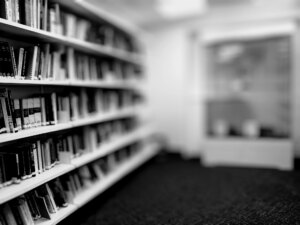Doing Women’s Film and Television History VI conference
Locating Women in the Archive

The DWFTH VI conference June 2023 at the University of Sussex was both stimulating and enjoyable. It was valuable to meet up in person and be able to talk to scholars whose work I had read, but never met. I took part in two roundtable events with colleagues from the IWBHN (International Women’s Broadcast History Network); one on women’s television production histories and the other on locating women in the archive, which I’m going to explore in more detail in this blog.
Despite there being more papers on film than television, there were themes emerging through the conference which spoke to both media. One central concern was the difficulty in locating women in the archive, especially those not in prominent positions. The ordinary histories of women’s work are difficult to find in traditional archives, which we heard in BFI archivist, Lisa Kerrigan’s paper. Somewhat surprisingly, she noted that TV is the largest collection at the BFI. However, we heard that she rarely receives offers of work for acquisition from women, which is telling, and chimes with the lack of prominence of women’s work, as well as women’s perception of the limited value of their work. We also heard of worrying issues in navigating the archive and collection database, with difficulties over cataloguing, because of production hierarchies, which favour directors, as well as human frailties and structural problems.
Many of us will have examples of struggling to find archival sources, which we know should exist. For instance, in recent contact with the BBC Written Archives, I found there were no files on any of the women I was looking at, despite them being Heads of Department. It seems that acquisition strategies do not prioritise the keeping of records about such women.
Morgan Wait from University College Dublin explained the challenges she’s faced in accessing archives because of economic and political issues, with archivists sometimes being unhelpful gatekeepers. This necessitates circumventing some institutional archives in Ireland, which have limited time and space and privilege broadcaster access over academics. She told us of having to become a ‘truffle hunter’, exploring the traces of women broadcasters in a whole host of archives, including the archives of men. Oral histories were highlighted as a particularly valuable source for women’s work.
Alec Badenoch from Utrecht University advised looking for women in broadcasting, in alternative spaces, such as Women’s archives. However, there are difficulties in navigating the gaps you are likely to find. Women’s archives aren’t always ideal for storing media materials, because media is on the margins for them, and they don’t necessarily have the tools to make assets accessible. Conversely, the work of women is also at the margin of media archives, and so we encounter issues wherever we search.
Taking the argument a stage further, Ipsita Saha from Jawaharlal Nehru University, New Delhi, spoke of finding YouTube a useful alternative digital archive for her work on Indian television with the ‘Tabassum Talkies’, shared online by the presenter’s family. Informal collections on platforms like YouTube can be a rich source but are also vulnerable and of course uncatalogued.
So, what can we do as academics to counteract the challenges of locating women in the archives?
Events and public engagement were highlighted as one solution by Janet McCabe of Birkbeck, University of London. She spoke of the potential for activating histories through curation and display, to awaken a remembered past, particularly at moments of crisis. We can do we do this through creating ‘living archives’, such as the ‘Shoulder to Shoulder’ event, a screened suffragette drama, encouraging the creative re-use of archives in new works.
And there are other potential solutions, for instance creating our own ‘idiosyncratic archives’, to plug some of the institutional gaps. These could include recording oral and written histories of living subjects and displaying digital artefacts. My own website, which celebrates the programme making history of BBC Pebble Mill: http://pebblemill.org is one such example: freely accessible, but with its own limitations and vulnerabilities. For instance, there are cases of similar enthusiast archives where historical materials are being lost for a second time, when citizen curators die or lose momentum.
Another idea, which Alec Badenoch mentioned, is to pool our collective knowledge of the archives and complete a mapping exercise about which collections hold materials in which areas. This could make an attractive collaborative funding bid for the right partners.
Additionally, encouraging archivists to make holdings about women more visible, by changing the way they catalogue items, or making ‘women’ an acquisition category, would be worthwhile. An alternative intervention could be alerting archives to the historical materials we may come across in our researches, and find homes for personal collections to avoid them ending up in a skip.
Dr Vanessa Jackson
